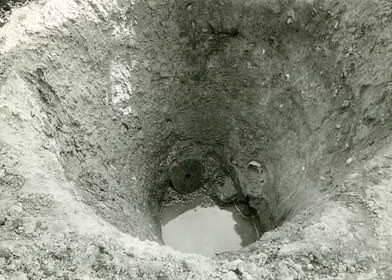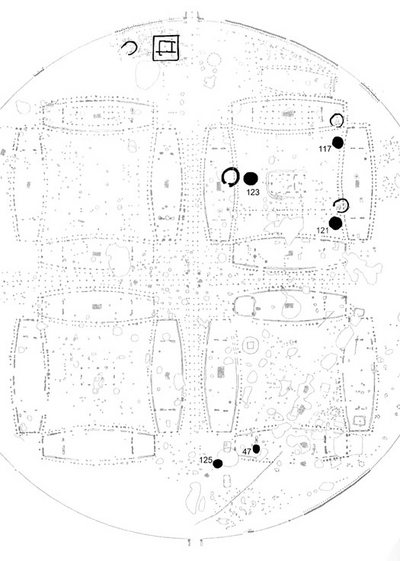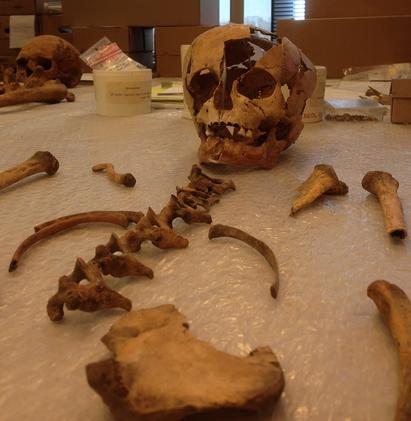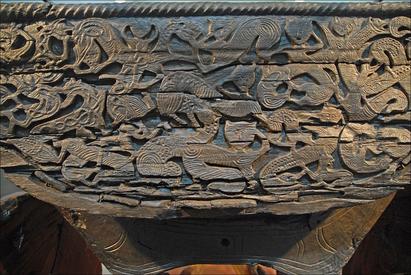
Human sacrifices?

A human life was the most valuable sacrifice that the Vikings could make to the gods. We know from written sources that Odin – the king of the gods – demanded human sacrifices. But do the sources tell the truth?

Exaggerated accounts?
There are several horrifying accounts of human sacrifices from the Viking period. The German bishop, Thietmar of Merseburg, describes how the Vikings met every nine years at Lejre on Zealand in January “and offer to their gods 99 people and just as many horses, dogs and hens or hawks, for these should serve them in the kingdom of the dead and atone for their evil deeds.”
The German monk Adam of Bremen wrote a similar account in 1072 about the sacrificial tradition at Gammel Uppsala in Sweden, where the temple was devoted to Thor, Odin and Frey. Here the Vikings also met every 9 years to ensure the goodwill of the gods. 9 males of all kinds of living creatures were sacrificed in a holy grove nearby. According to Adam of Bremen dogs, horses and humans hung from the trees. The number 9 was apparently of magical significance to the Vikings and was involved in a number of rituals.
There has been extensive debate over whether these accounts were real or simply Christian propaganda. Neither Thietmar nor Adam witnessed the cult activities themselves. They wrote their chronicles in the late Viking period and early Middle Ages, when Christianity had taken over and human sacrifices were no longer acceptable.
Therefore, Thietmar and Adam’s accounts have long been dismissed as pure fabrication. However, archaeological finds from recent years show that human sacrifice was a reality in Viking Age Denmark. In particular, skeletons recovered from wells at the Viking fortress of Trelleborg and the magnate’s residence at Tissø, both in West Zealand, have made archaeologists think very differently.
Human sacrifices at Trelleborg

At Trelleborg a sacrificial site was found from the time before the Viking fortress was erected in 980-81. In five c. 3 metre-deep wells human and animal skeletons were found, together with jewellery and tools. Of the total of five human sacrifices, four were young children aged between 4 and 7.
It is very significant that the skeletons were found in wells. The Vikings attributed great symbolic importance to wells. Odin gained his wisdom from drinking at Mímir's well. In exchange he had to sacrifice one of his eyes to Mímir. But what could the sacrifice of a whole human being be rewarded with?
At Trelleborg a small enclosure was also identified near to three of the sacrificial wells. Here a sacrificial ritual may have taken place before the victims were deposited in the deep wells. Perhaps the sacrificial site belonged to the settlement that was located 300 m from Trelleborg. When the fortress was constructed, the cult site was dismantled and the sacrifices stopped. In the new Christian religion, which was becoming increasingly dominant, humans were not sacrificed.
Did the Vikings go on cult processions?


A woman of high status, perhaps a queen, was laid to rest in a ship burial at Oseberg. Amongst her many precious grave goods was a fine woven tapestry depicting a procession. The participants are festively dressed warriors and women, who walk, ride horses and two of them sit in one of the horse-drawn vehicles. We know that the Iron Age fertility cult involved transporting the deity over the fields in a covered cart in order to secure the best yields.
Just such a fine carved cart, which would have been unsuitable for daily use, was found in the grave. The cart has therefore been interpreted as a cultic procession vehicle. Support for this function is provided by the fact that it is decorated with cats - an animal that is associated with the fertility and love goddess Freyja. If we return to the tapestry, it includes depictions of covered carts. Do they conceal icons of Freyja? The cultic nature of the burial may indicate that the buried woman was Freyja’s earthly representative.
